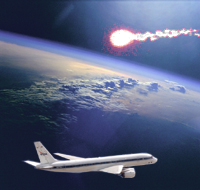 Hajime Yano,
Hajime Yano,
Institute of Space and Astronautical
Science, Japan

E-Mail:
Home page
Brief Biographical Information:
Dr. Yano coordinates the Japanese participation to Leonid MAC.
1999-Present Assistant Professor, Planetary Science Division,
ISAS,Kanagawa, Japan
1998-1999 NRC Research Associate, NASA Johnson Space Center, Houston,
TX, USA
1995-1998 JSPS Postdoctoral Research Fellow, Planetary Science
Division, ISAS, Kanagawa, Japan
1995 Ph.D. in Space Sciences, University of Kent, Canterbury, U.K.
1992-1995 Postgraduate Student at the Unit for Space Sciences &
Astrophysics, University of Kent, Canterbury, U.K.
1992 National Delegate, the Ship for World Youth Program, Prime
Minister's Office, the Japanese Government
1991 Research Assistant, Infrared Astronomy Division, ISAS, Kanagawa,
Japan
1987-1991 BSc in Physics, International Christian University, Tokyo,
Japan
1989-1990 Reciprocity Student, Astronomy Major, University of
California, Berkeley, CA, USA
Born in Tokyo, Japan
Current Research:
- Solar System Minor Bodies(Comets/Asteroids/NEOs/KBOs)
- Micrometeoroids in Space
- Antarctic Micrometeorites
- Leonid Meteor Stream
- Space Debris
- Hypervelocity Impacts
Specific Tasks:
- Planetary Mission Design
- Micro-Analysis Technique
- Asteroid In-Situ Sampling Device Development
- Sample Return Curation & Initial Analysis
- Dust Detector/Collector Development
- Space Station Experiments
Project Contributions:
- Long Duration Exposure Facility-MAP & Clamps
- European Retrievable Carrier-TiCCE & Post Flight Analysis(PFA)
- Hubble Space Telescope Solar Array-PFA
- Space Flyer Unit-PFA
- Mir-ODC
- International Space Station JEM-EF
- Leonid-MAC HD-TV II
- Stardust
- MUSES-C
- Mercury Orbiter-DD
- Spaceguard
Research on Leonid MAC:
Faintest meteor flux, dynamics and spectroscopy by High-Definition TV
Digital Video Camera with Image Intensifiers(HD-TV-II)
High sensitive HD TV observations of meteor showers make it possible to study meteors
of fainter magnitudes and at higher astrometric precission than with normal
intensified cameras. The large pixel format video-frame-rate images
enable high quality slit-less spectroscopic studies of meteors as well.
For the 2001 missions, we will be equipped with our own intensified HDTV cameras.
The cameras used in the 1998 and 1999 Leonid MAC missions
were developed by NHK (Nippon Housou Kyoukai, the
Japan Broadcasting Corporation). These cameras are composed of a large diameter image
intensifier along with a 1-inch 2M-pixel FIT CCD, which has a resolution of 1150 TV
lines (1920 x 1035 pixels) and a high signal to noise ratio of 50 dB. Normal NTSC video
has 640x480 pixels, 6.5 times less. Its image format of 20 mm by 35
mm makes it possible to use high quality lenses for 35mm reflex cameras.
Results todate include studies of meteor stream activity in the context of the
satellite impact hazard, in publications in GRL and spectroscopic studies of metal
atom emissions reported in Earth Moon and Planets (Vol 82-83,
special Leonid Storm Research issue). This work served as the Ph.D. thesis material for
Shinsuke Abe, then at NOAO in Tokyo, Japan.
J.-I. Watanabe, S. Abe, M. Takanashi, T. Hashimoto, O. Iiyama, 1999,
"HD TV Observation of the Strong Activity of the Giacobinid Meteor Shower in 1998",
Geophys. Res. Lett. 26, 1117-1120.
The image below was taken onboard Electra in the night of November 17. Individual bars
show the measured position of the meteor and its direction of motion.
Research on Hyperseed MAC:
Liason with Hayabusa reentry observing campaign.










 Hajime Yano,
Hajime Yano, 